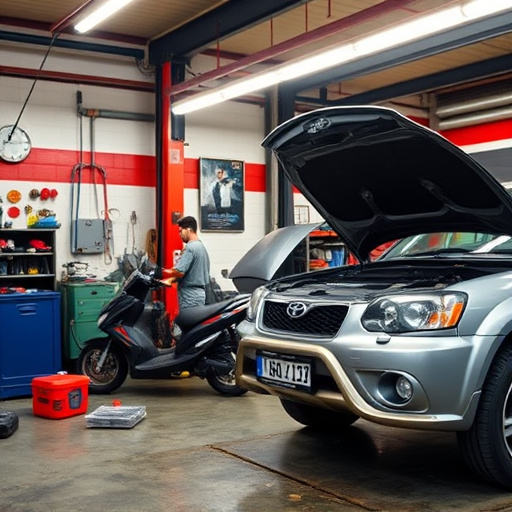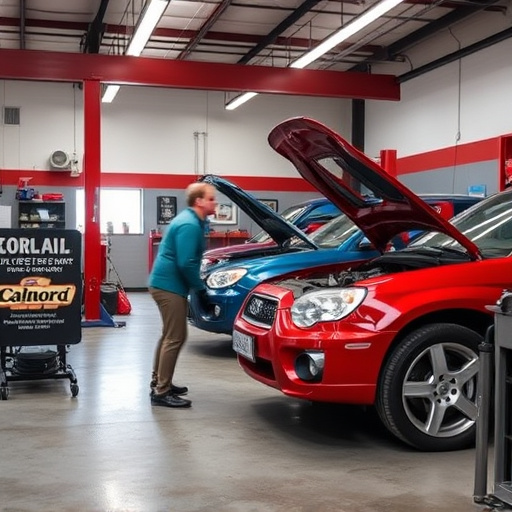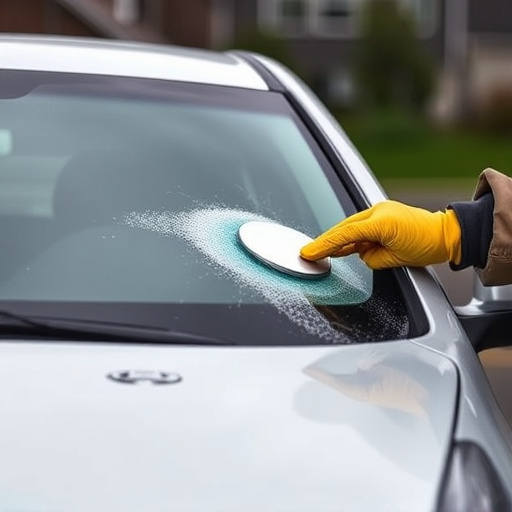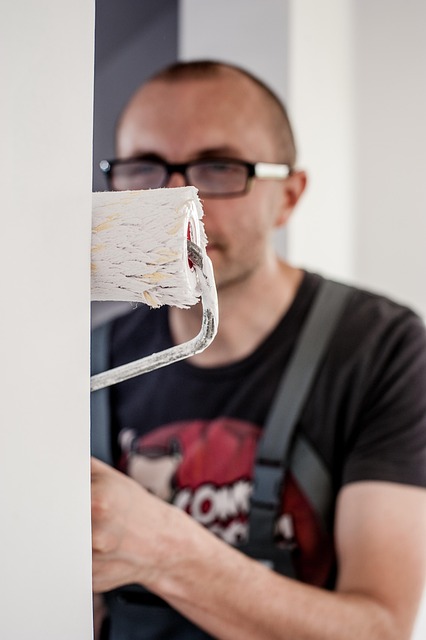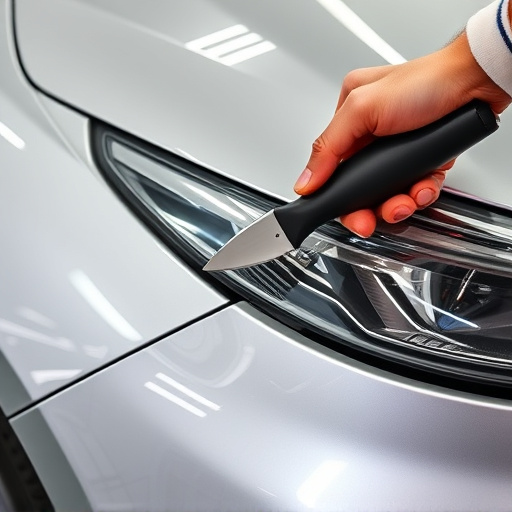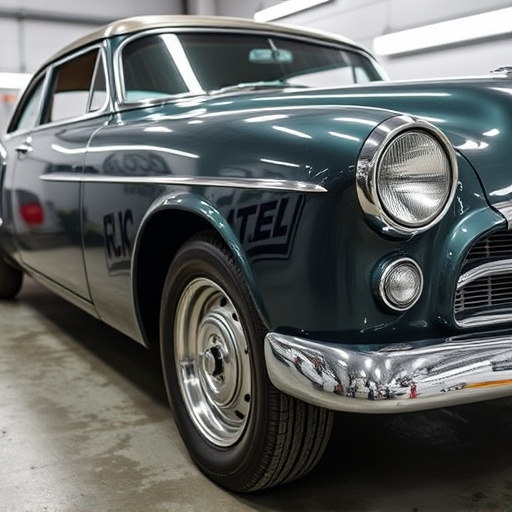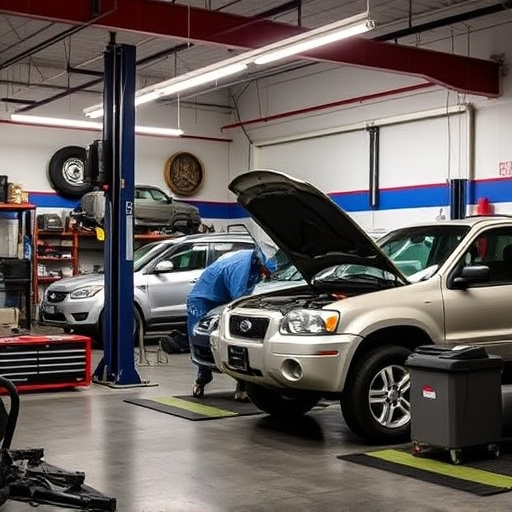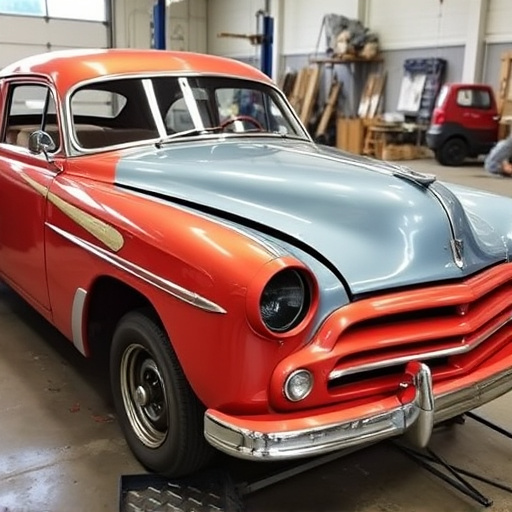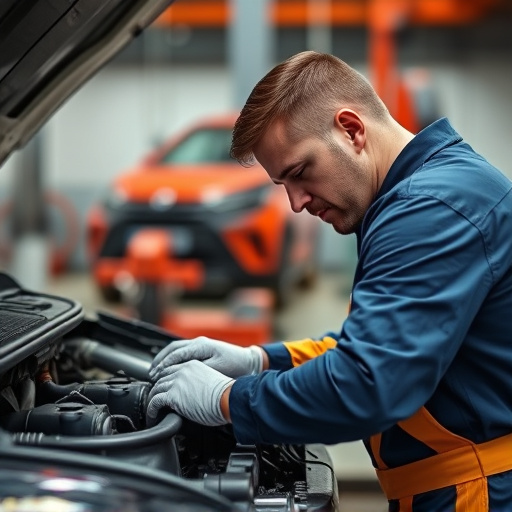Paint chip damage reduces a vehicle's appearance and value. Prompt repair is key for maintaining condition and resale. Professional repair involves removing loose paint, preparing surfaces, matching repainting. Essential tools include sandpaper, putty knife, automotive paints, masks, tape, drop cloths, mallets, and suction cups. The process includes sanding, priming, precise painting, texture creation, and clear coating for a seamless finish that enhances aesthetics and resale value.
“Discover the art of achieving flawless paint chip repair with our comprehensive guide. Paint chips, while common, can detract from your space’s aesthetic. Understanding their causes and types is key to effective fixes. Armed with the right tools and a simple step-by-step approach, you can master this task. From preparation to final touch-ups, learn secrets to ensure your paint chip repair results in a seamless, professional finish. Elevate your DIY skills and transform damaged areas into flawless features.”
- Understanding Paint Chip Damage: Causes and Types
- Essential Tools for Flawless Repairs
- Step-by-Step Guide to Achieving Perfect Results
Understanding Paint Chip Damage: Causes and Types

Paint chip damage is a common issue that can mar the appearance and value of vehicles, both in personal and commercial fleets. Understanding this type of damage is crucial for effective paint chip repair. Causes range from minor road debris impacts to more significant car collisions, with varying degrees of severity and types of chips. Small, shallow dents known as “nicks” are typical, often caused by tiny stones or insects striking the surface. Larger, deeper chips may result from more substantial obstacles like a curb or another vehicle during a collision. Even small chips can affect a car’s overall aesthetics if left unaddressed, impacting its resale value.
For fleet repair services or auto repair near me, addressing paint chip damage promptly is essential to maintain the vehicles’ condition and value. While some minor nicks might be ignorable, deeper chips should be repaired professionally to ensure even paint application and prevent further damage. The process involves careful removal of the damaged area’s loose paint, preparation of the surface, and meticulous repainting to match the vehicle’s original finish, ensuring an unobtrusive repair that preserves the car or truck’s overall aesthetics and market value.
Essential Tools for Flawless Repairs
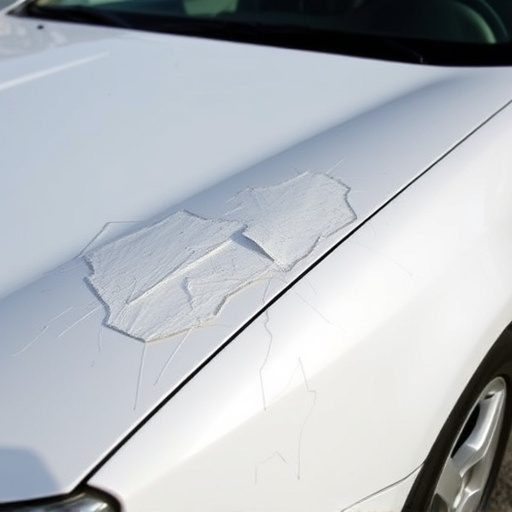
Achieving flawless paint chip repair results requires a well-stocked toolkit and a keen eye for detail. Essential tools for this task include a variety of sandpaper grits, ranging from coarse to fine, which help in removing damaged paint layers while smoothing out the surface. A good quality putty knife is also indispensable; it should be thin enough to apply filler precisely and thick enough to handle different contours.
For painting, opt for high-quality automotive paints that match your vehicle’s original finish. A masker, painter’s tape, and a drop cloth are crucial accessories that protect surrounding areas from splatters and ensure a clean workspace. Additionally, dent removal tools like rubber mallets and suction cups can be handy in addressing deeper dents before applying filler, making the overall repair process more efficient and effective.
Step-by-Step Guide to Achieving Perfect Results

Achieving perfect paint chip repair results requires a meticulous approach. Begin by preparing the damaged area – gently sand the surface to ensure smoothness and remove any debris or loose particles. Next, apply an appropriate primer designed for paint chip repairs; this will help blend the new paint with the existing finish seamlessly.
Once the primer dries, carefully match the surrounding color using high-quality automotive paint. Use a fine brush or spray gun for precise application, following the manufacturer’s instructions for drying times. Lightly sand again after painting to create a slightly rough surface, allowing the final coat to adhere better. Finally, apply a clear coat to protect the repair and achieve a glossy, seamless finish that matches the vehicle’s original paint job – both in color and texture. This step-by-step process ensures your paint chip repair is not just hidden but virtually indistinguishable from the rest of the vehicle’s bodywork, enhancing its overall aesthetic appeal and resale value.
Whether you’re a DIY enthusiast or a professional painter, mastering paint chip repair is an invaluable skill. By understanding the causes and types of damage, arming yourself with the right tools, and following a meticulous step-by-step guide, achieving flawless results for your paint chip repair becomes achievable. With these secrets in hand, you can transform any damaged surface into a seamless whole, ensuring longevity and aesthetic appeal for your spaces.
